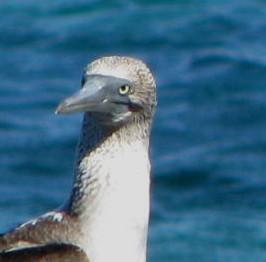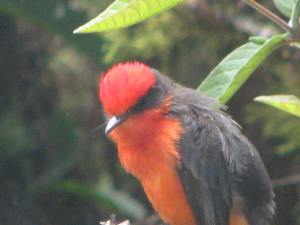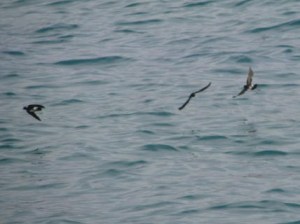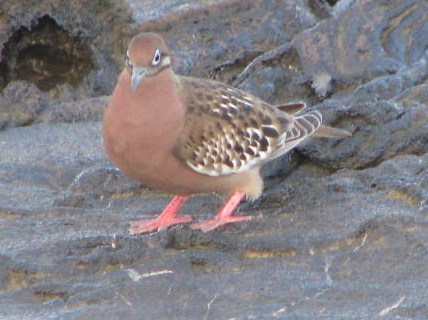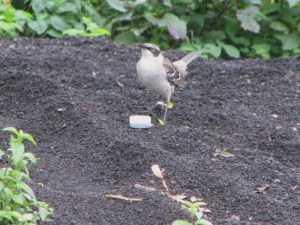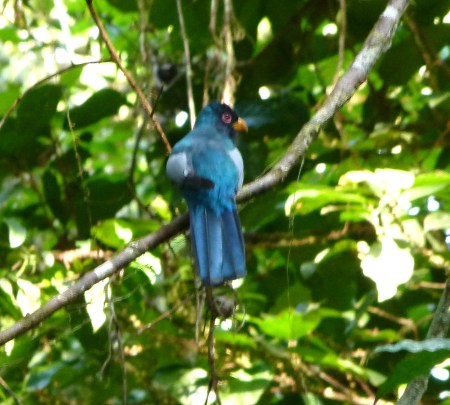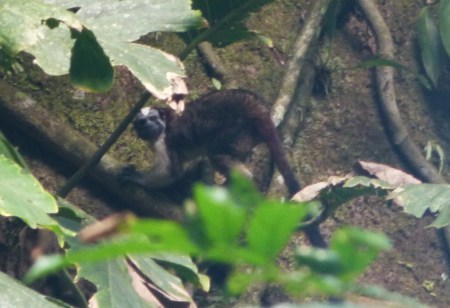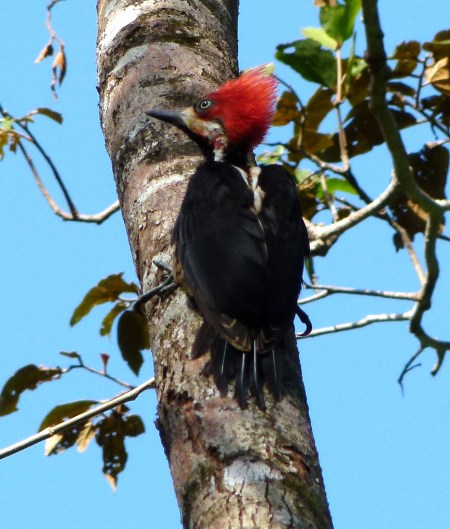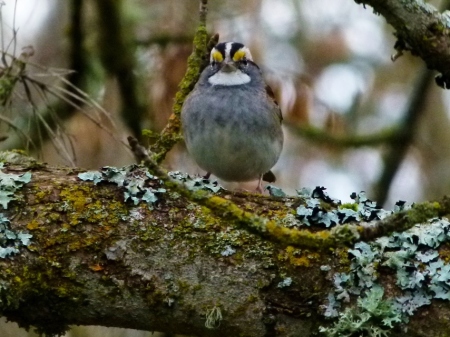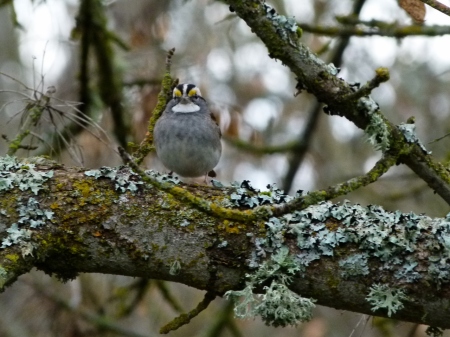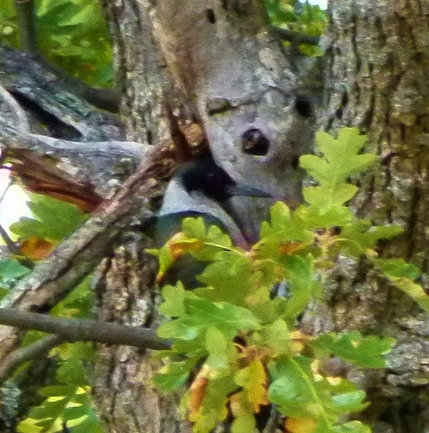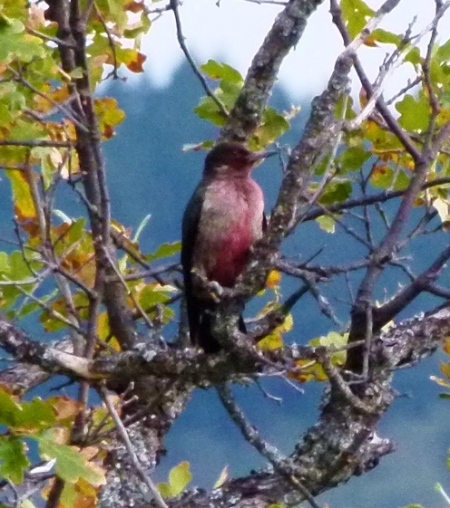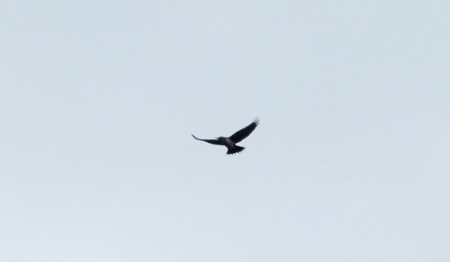ASHLAND, OREGON, US, NORTHERN HEMISPHERE, JUST ABOUT HALF-WAY FROM EQUATOR TO NORTH POLE
For some birds this is the season of togetherness. Parents and juveniles, families and cousins, unrelated birds of same species, even several species ganging together. What the flock?
Here is a small group of female Hooded Mergansers near a pair of sleepy female Bufflehead on Ashland Pond. A common winter sight that is not to be found during breeding season.
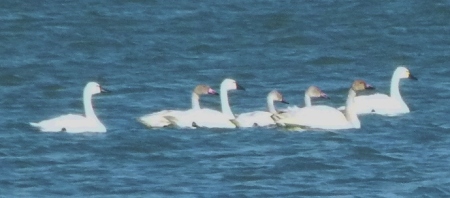 Above, Tundra Swans on Emigrant Lake (they are no longer there) showing three adults and four gray-headed juveniles. Parents and offspring? Here are Snow Geese (still at Emigrant Lake today). Two white adults, two grayish juveniles who may be their off-spring.
Above, Tundra Swans on Emigrant Lake (they are no longer there) showing three adults and four gray-headed juveniles. Parents and offspring? Here are Snow Geese (still at Emigrant Lake today). Two white adults, two grayish juveniles who may be their off-spring. 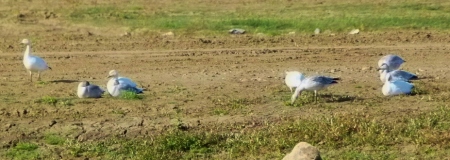 Below, small flock of Green-winged Teal; they even fly in tight formation when they take off.
Below, small flock of Green-winged Teal; they even fly in tight formation when they take off. Covey of California Quail. Historically these coveys included numerous family groups and would grow to the hundreds in food-rich habitats before gunners and feral cats came on the scene. Before Europeans arrived Native Americans could hunt quail with nets because the flocks were so dense.
Covey of California Quail. Historically these coveys included numerous family groups and would grow to the hundreds in food-rich habitats before gunners and feral cats came on the scene. Before Europeans arrived Native Americans could hunt quail with nets because the flocks were so dense. 

This is a Solitaire in Harney County, OR. At the Sage Hen Rest Stop on US20 where I took this shot there were also Starlings, Cedar Waxwings, Robins, Mountain Bluebird and Varied Thrush all sharing the healthy juniper berry crop. Very mixed flock.
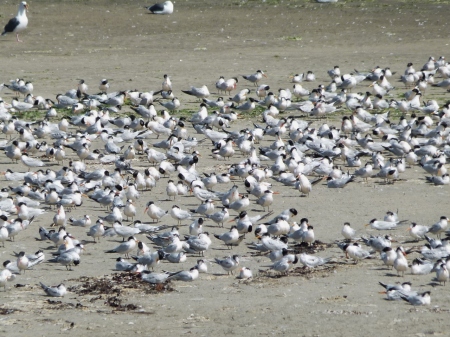 Above, a group of Elegant Terns loafing in Monterey after breeding season is over.
Above, a group of Elegant Terns loafing in Monterey after breeding season is over.
There are many working theories about why birds of a feather flock together. None are more together than some small shorebirds or Cedar Waxwings. The latter often be identified in flight at great distances simply by the cohesion of the flock. Mutual alert system? More eyes to find the food source? Safety in numbers? We should ask the birds…but maybe they have little self-awareness. Among Corvids there is “deliberate” or at least instinctive food-sharing rather than secretiveness. Again this may insure more survival for more individual birds. Fifty Ravens have a better chance of finding a fresh carcass than any single bird, then the croak goes out and the flock gathers to feed.
Certain families of birds in North America are almost always in flocks when not breeding: Acorn Woodpeckers (even putting all their eggs into one basket), Bushtits, most sparrows (except Song), finch family members from siskin to Evening Grosbeak, swallows, Robins, Icterids (blackbirds and meadowlarks), most Corvids (magpies to Crows), chickadees, Golden-crowned Kinglet, pipits, starlings, swifts, Burrowing Owls, nightjars, waterfowl, shorebirds, cormorants, gulls and terns, pelicans, grebes.
Some other families of birds may join mixed species flocks but aren’t highly tolerant of their fellows from the same species: tyrant flycatchers#, nuthatches, most raptors*, hunting herons and egrets (though many nest in colonies), vireo, Ruby-crowned Kinglet, shrikes, cuckoos, many woodpeckers, most owls.
For some interesting musing on mixed-species flocks, check out this piece by Jack Connor in Cornell’s LIVING BIRD magazine.
* There are colonial members of the falcon family that flock together: caracaras, Little Kestrel in Europe, Eleanora’s Falcon. But DNA tells us falcon have more in common with woodpeckers than with a Red-tailed Hawk or Osprey.
# When was the last time you saw ten Black Phoebe sitting on a telephone wire lined up like Tree Swallows or blackbirds?


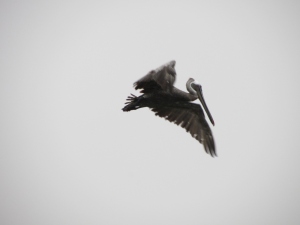


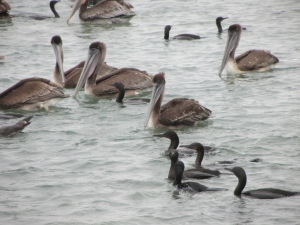

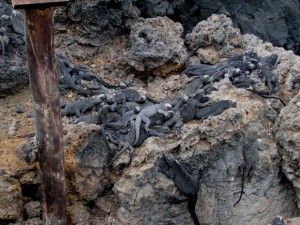


 The birds, from top to bottom: Lava Gull, Lava Heron, Wilson’s Plover. Blue-footed Booby, Brown Pelican with his outboard motor, Vermilion Flycatcher. Elliot’s Storm-Petrels.
The birds, from top to bottom: Lava Gull, Lava Heron, Wilson’s Plover. Blue-footed Booby, Brown Pelican with his outboard motor, Vermilion Flycatcher. Elliot’s Storm-Petrels.
